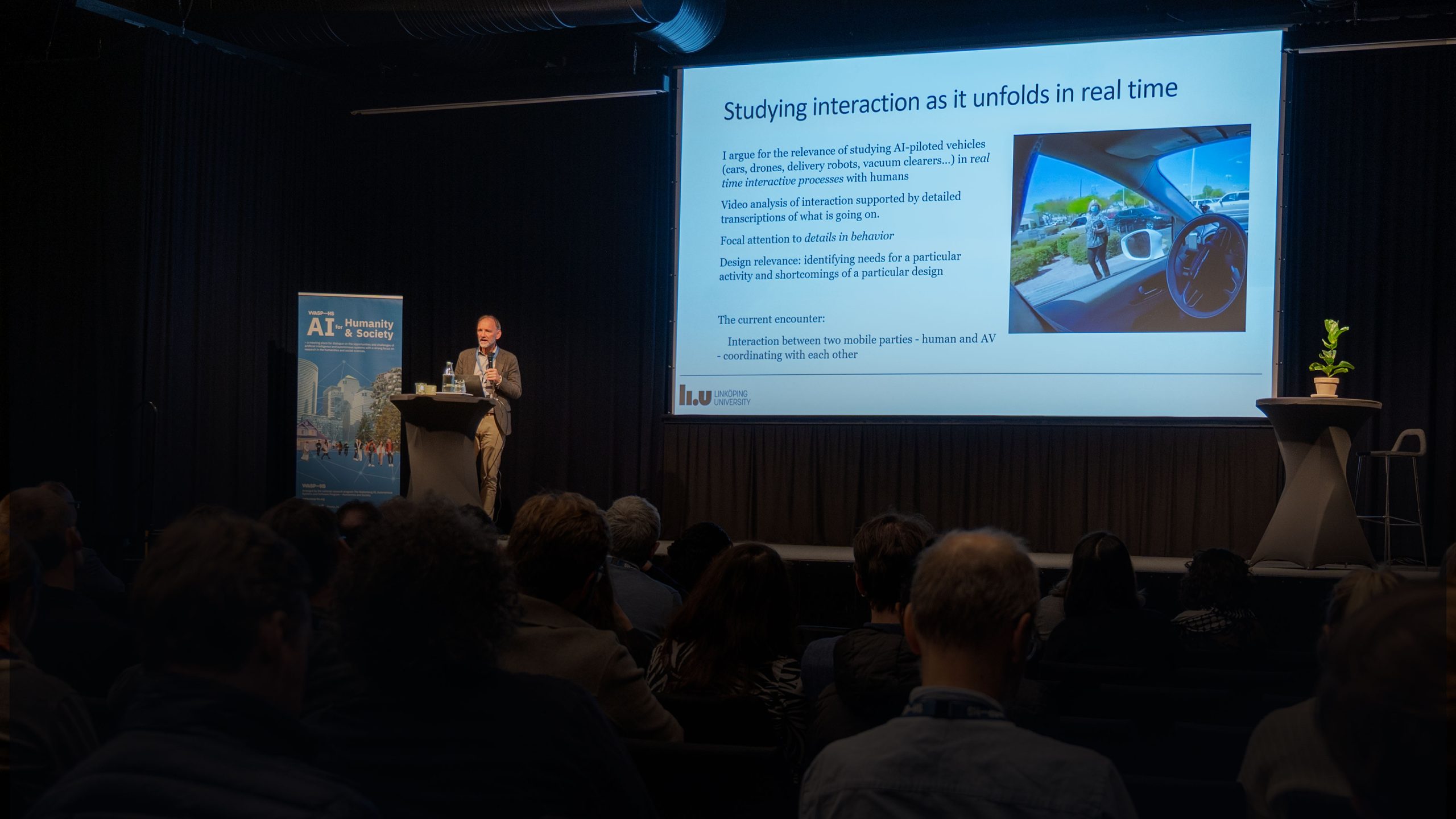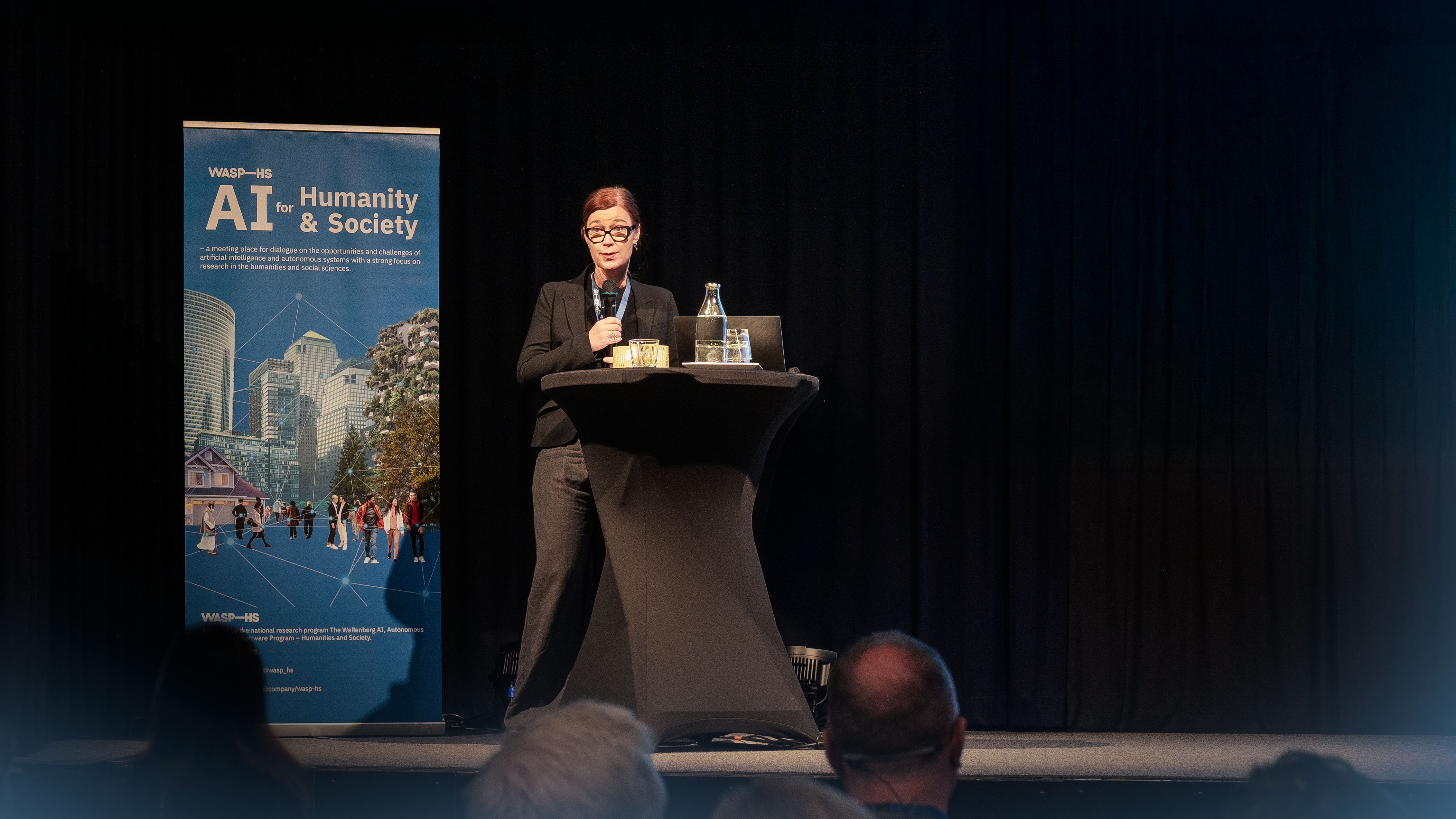Dominika Lisy, and Maria Arnelid WASP-HS PhD students at the Department of Thematic Studies, Linköping University, has installed an exhibition on social robots running from August 13 to October 31 at Arbetsmuseet in Norrköping.
What is the exhibition about?
The exhibition is called “The Social Robot” and an important aim is to communicate our research on the topic of social robots to a public audience and through different media. The exhibition is in collaboration with Arbetets Museum in Norrköping as part of their larger exhibition called Digitopia which explores the effect of digitalization on society, with a focus on the areas of work, everyday life, care and surveillance.
In our temporary contribution to this exhibition (running from August 13th to October 31st) we want to invite the general public to reflect on and engage with their imaginaries about the social robot, and disseminate knowledge about the concepts that are important for us in thinking about the social robot.
What inspired the exhibition?
An overarching goal with this exhibition is to contribute to discussions on the social robot – a type of robot that is increasingly imagined for use, for example, in healthcare, education and service. When we visited the museum shortly after the Digitopia exhibition opened, they suggested that we make use of the temporary exhibition space. Simultaneously we heard about a “Valorisation of research result” (VFN) grant from Linköping University which seemed a perfect chance to create a rich and multifaceted exhibition with the use of various media. We saw this as a great opportunity to invite the public to critically reflect on the potential role of robots in society and bring our research topics into non-academic discussion spaces.
What can visitors expect from the exhibition?
We exhibit three different types of social robots: the Joy for All Companion Pet Cat, the Cozmo robot, and the NAO robot, as well as information about and video material depicting the robots in action. The video material shows information from the robot companies explaining how the robots work and move, as well as actual research material from ourselves and colleagues. We also exhibit short informational texts on the concepts of emotions, care, anthropomorphism and touch: topics that relate to the robots in different ways and that are relevant in our research. Finally, we invite people to listen to stories about fictional robots, as part of a study exploring robotic imaginary through a method called story completion.
In what way is the exhibition connected to your PhD work?
Both of our individual research projects concern the development and use of social robots and its social and ethical consequences. Dominika explores empathy as a way to connect and cross boundaries between human and non-human. Maria’s research focuses on what kind of care is imagined in the development of robots for care for older adults. We share an interest in the concept of ‘robotic imaginaries’: the wide variety of cultural and historical resources that shape how robots are imagined. The exhibition is therefore a way to disseminate our research, as well as a way to gather material for a shared study, by inviting visitors to write their own stories about social robots.
Acknowledgements We would like to thank Hannah Pelikan, Ericka Johnson, Fredrik Löfgren and Fredrik Heintz for generously lending us the robots for this exhibition and providing video material from their own research. Video material also came from researchers from the Max Planck Institute for Intelligent System in Stuttgart, Germany, which we are deeply grateful for. We would also like to thank especially the curators Josefin Höijer and Alexandra Kronqvist as well as the technicians at the Arbetets Museum who helped us build this exhibition.





